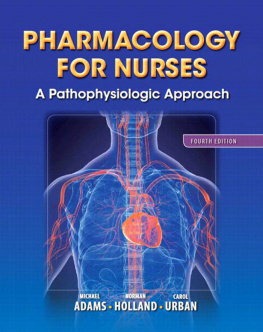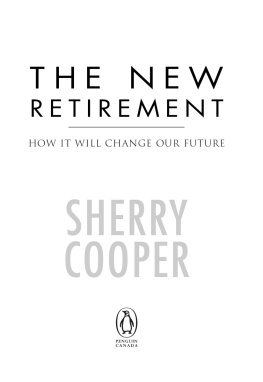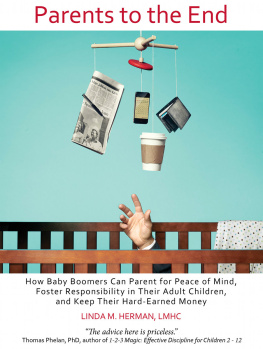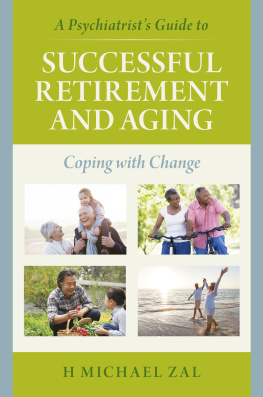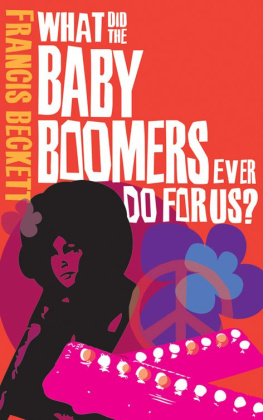Stayin
Alive
Also by Michael Adams
Sex in the Snow
The Surprising Revolution in Canadian Social Values
Better Happy Than Rich?
Canadians, Money and the Meaning of Life
American Backlash
The Untold Story of Social Change in the United States
Unlikely Utopia
The Surprising Triumph of Canadian Pluralism
Fire and Ice
The United States, Canada and the Myth of Converging Values
Stayin
Alive
HOW CANADIAN BABY BOOMERS WILL
WORK, PLAY, AND FIND MEANING
IN THE SECOND HALF OF THEIR ADULT LIVES
MICHAEL ADAMS
WITH AMY LANGSTAFF

VIKING CANADA
Published by the Penguin Group
Penguin Group (Canada), 90 Eglinton Avenue East, Suite 700, Toronto, Ontario, Canada M4P 2Y3 (a division of Pearson Canada Inc.)
Penguin Group (USA) Inc., 375 Hudson Street, New York, New York 10014, U.S.A.
Penguin Books Ltd, 80 Strand, London WC2R 0RL, England
Penguin Ireland, 25 St Stephens Green, Dublin 2, Ireland (a division of Penguin Books Ltd)
Penguin Group (Australia), 250 Camberwell Road, Camberwell, Victoria 3124, Australia
(a division of Pearson Australia Group Pty Ltd)
Penguin Books India Pvt Ltd, 11 Community Centre, Panchsheel Park, New Delhi 110 017, India
Penguin Group (NZ), 67 Apollo Drive, Rosedale, North Shore 0745, Auckland, New Zealand
(a division of Pearson New Zealand Ltd)
Penguin Books (South Africa) (Pty) Ltd, 24 Sturdee Avenue, Rosebank,
Johannesburg 2196, South Africa
Penguin Books Ltd, Registered Offices: 80 Strand, London WC2R 0RL, England
First published 2010
1 2 3 4 5 6 7 8 9 10 (RRD)
Copyright Michael Adams, 2010
All rights reserved. Without limiting the rights under copyright reserved above, no part of this publication may be reproduced, stored in or introduced into a retrieval system, or transmitted in any form or by any means (electronic, mechanical, photocopying, recording or otherwise), without the prior written permission of both the copyright owner and the above publisher of this book.
Manufactured in the U.S.A.
LIBRARY AND ARCHIVES CANADA CATALOGUING IN PUBLICATION
Adams, Michael, 1946 Sept. 29
Stayin alive: how Canadian baby boomers will work, play, and find meaning in the second half
of their adult lives / Michael Adams.
Includes index.
ISBN 978-0-670-06369-7
1. Baby boom generationCanada. I. Title. II. Title: Staying alive.
HQ1059.4.A43 2010 305.244 C2010-905412-1
Visit the Penguin Group (Canada) website at www.penguin.ca
Special and corporate bulk purchase rates available; please see
www.penguin.ca/corporatesales or call 1-800-810-3104, ext. 2477 or 2474
For my parents and my kids
Introduction
The Seven Ages of Man
All the worlds a stage,
And all the men and women merely players:
They have their exits and their entrances....
... At first the infant,
Mewling and puking in the nurses arms....
... Last scene of all,
That ends this strange eventful history,
Is second childishness and mere oblivion,
Sans teeth, sans eyes, sans taste, sans everything.
Shakespeare, As You Like It
I was born on September 29, 1946, one of Canadas first postwar babies. Unbeknownst to me or my parents, I instantly became a member (some would say an early warning sign) of what would eventually be called the Baby Boom generation. The term baby boom had been used prior to this era in reference to surges in fertility. But the animal known as the Baby Boomerwith its extensive cultural baggage, including sexual liberation, idealism, marijuana, feminism, narcissism, the Beatles, environmentalism, and so onhas existed for only about five decades.
If this first paragraph has struck fear into your heart, take comfort: I promise you this book is not my autobiography. But I do identifywith a mixture of pride and self-deprecationas a Baby Boomer, and I believe that in many ways my experience has been typical of my cohort. Most of this book is dedicated to the discussion of Baby Boomer values and attitudes as expressed in Environics survey research over the past two decades. But where personal anecdotes illustrate more general points I will offer them; would the reader expect anything else from a member of this notoriously self-absorbed generation?
My parents were married in July 1945, just after my dad returned from five years of service in the Royal Canadian Navy in the Atlantic theatre. After Germany surrendered in May, my dad had volunteered to fight in the Pacific. But with the Japanese surrender, he was free to remain home in Walkerton, Ontario. Dad observed that had the war in Europe not ended when it did, he wouldnt have returned to Walkerton in the spring of 1945, and he might not have met my mother (who was dating his air force brother at the time; Walkerton was and is a small town)or if he had met her, it might not have been in time to win her heart and make her his wife instead of his sister-in-law.
As for the trajectory that put my mom in my dads path, she was a newly minted registered nurse, just back in Walkerton after three years training at Torontos St. Michaels Hospital. A devout Catholic, my mother told her doctor (and he told God) that I would be born on September 29 because that was the feast of St. Michael the Archangel. Today, Canadians tend to trust Caesarean sections to ensure their babies are born without incident and under the right stars; one in five hospital births in 2002 occurred by Caesarean, compared to one in twenty in 1968. In Walkerton in the mid-1940s, the preferred technology for promoting a healthy birth was prayerand I arrived through the traditional channels, right on time.
Over 340,000 of us were born in Canada in 1946 as other couples joined my mom and dad in postwar wedded bliss. I and my Boomer brother, Doug, were among millions of others born throughout the late 1940s and 1950s and into the early 1960s. The boom died out during the mid-60s with a sharp decline in the birth rate beginning in 1964. Researchers use various cutoffs to mark the end of the Baby Boom; we at Environics use 1965a somewhat arbitrary choice, but you have to stop somewhere (as even the hyper-fertile generation that produced us finally admitted).
It argues that we were and are different from our parents generationand that these differences will persist until we die. (Indeed, Boomer values will assert themselves even from beyond the grave, as the deathrelated rituals discussed in Chapter Eight attest.)
Why study Boomers? Its a fair question. A great deal of ink has already been spilled in analyzing, celebrating, criticizing, and teasing the Baby Boomers. Much of the writing about this generation has been nostalgic, recalling our youth in dreamy, sometimes self-mythologizing tonesthe music we loved, the suburban tract homes that soothed or stifled us, our activism, our convictions, our innovations, and our rebellions, both public and private.
For all the trees that have given their lives to the analysis of Baby Boomers, however, two vital aspects of this generation remain surprisingly little discussed. The first is its diversity. To hear some commentators describe these 9.1 million Canadiansnot to mention their even more numerous American counterpartsone might think they had all shaken hands (or perhaps shared a hug or more in the mud at Woodstock) over some official generational values consensus. Our social values data show again and again that no such consensus exists: sharp variations occur across the Boomer generation on a huge range of questions, from social norms, religion, and gender roles to money, consumption, and global issues.
Next page

